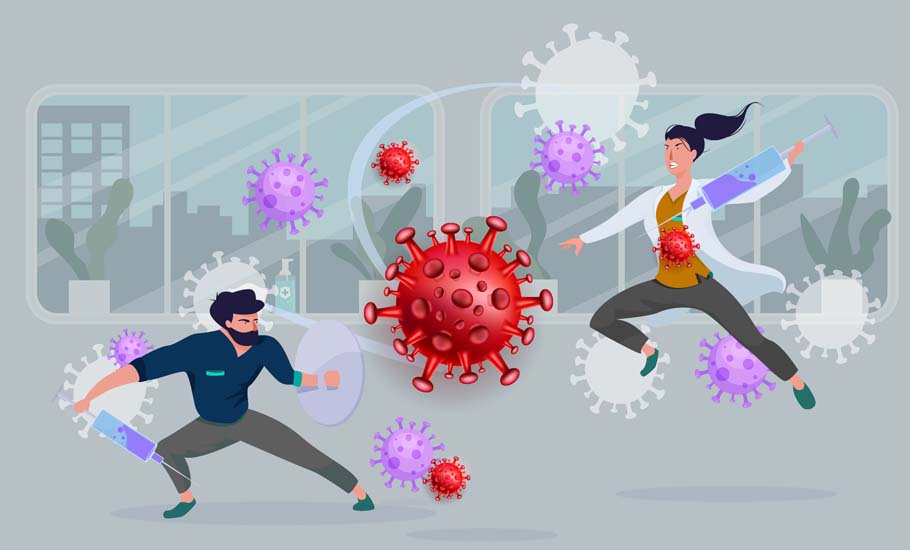
- Home
- India
- World
- Premium
- THE FEDERAL SPECIAL
- Analysis
- States
- Perspective
- Videos
- Sports
- Education
- Entertainment
- Elections
- Features
- Health
- Business
- Series
- In memoriam: Sheikh Mujibur Rahman
- Bishnoi's Men
- NEET TANGLE
- Economy Series
- Earth Day
- Kashmir’s Frozen Turbulence
- India@75
- The legend of Ramjanmabhoomi
- Liberalisation@30
- How to tame a dragon
- Celebrating biodiversity
- Farm Matters
- 50 days of solitude
- Bringing Migrants Home
- Budget 2020
- Jharkhand Votes
- The Federal Investigates
- The Federal Impact
- Vanishing Sand
- Gandhi @ 150
- Andhra Today
- Field report
- Operation Gulmarg
- Pandemic @1 Mn in India
- The Federal Year-End
- The Zero Year
- Science
- Brand studio
- Newsletter
- Elections 2024
- Events
- Home
- IndiaIndia
- World
- Analysis
- StatesStates
- PerspectivePerspective
- VideosVideos
- Sports
- Education
- Entertainment
- ElectionsElections
- Features
- Health
- BusinessBusiness
- Premium
- Loading...
Premium - Events

How the year of helplessness made a paramedic out of all of us

India was out and about like India had always been when summer 2021 came knocking. Even as the temperature rise made its way through the doors that opened, the second wave of Covid rushed in like a tsunami catching us unaware and unprepared. The number of positive cases began doubling at a pace which pushed our unprepared selves into total despair. Visuals of people trying to give...
 India was out and about like India had always been when summer 2021 came knocking. Even as the temperature rise made its way through the doors that opened, the second wave of Covid rushed in like a tsunami catching us unaware and unprepared. The number of positive cases began doubling at a pace which pushed our unprepared selves into total despair. Visuals of people trying to give mouth-to-mouth resuscitation in a last-ditch effort to save those they loved, brought the whole nation together in its utter sense of helplessness.
India was out and about like India had always been when summer 2021 came knocking. Even as the temperature rise made its way through the doors that opened, the second wave of Covid rushed in like a tsunami catching us unaware and unprepared. The number of positive cases began doubling at a pace which pushed our unprepared selves into total despair. Visuals of people trying to give mouth-to-mouth resuscitation in a last-ditch effort to save those they loved, brought the whole nation together in its utter sense of helplessness.
If the first wave filled the social media platforms with lockdown cooking and lockdown exercising photos and videos, the second wave metamorphosed social media into one big help desk. People let out desperate cries for help even for those they never knew, for those they would never know. In many cases help reached. In many others, the person for whom help was being sought succumbed before an oxygen cylinder or a remdesivir could be arranged. Doctors used to seeing patients die before them choked on national TV talking of death.
By the time the summer of 2021 began withdrawing, it had changed and educated us in ways that we are yet to comprehend. From how to offer condolences to how to operate the oximeter and oxygen cylinder, we grew both emotionally and technologically.
Saloni Zutshi managed to get two empty, portable oxygen cylinders and shot a quick video of the supplier demonstrating how to operate them—this was a day before her parents-in-law came down with the infection.
“Then, one by one, everybody at home fell sick,” recalls Zutshi. Re-filling the empty cylinders meant standing in long queues in the wee hours of the morning. The wait proved worth it when her brother-in-law’s condition worsened for the family had an oxygen cylinder to put the patient on before a hospital bed could be arranged. Eventually, a bed with oxygen support was found. The freed cylinder was then lent to Zutshi’s friend in need. As Zutshi dropped the cylinder at the friend’s house, she passed on the video with instructions on how to use it too.
“The small cylinder is really simple to use actually. But, I think, because there was so much anxiety and the person’s oxygen levels were dropping, the family couldn’t figure out how to use it and ended up wasting gas,” she recounts.

That scenario probably captures the ordeal, and the agility, which COVID-19 forced upon us in 2021. Yes, it has been a continuum from the previous year when the world as we knew it changed—but household conversations this year inevitably involved medical and scientific ideas that we possibly never imbibed with the same urgency. Everything from vaccines to variants-of-concern, Sp02 levels to CT values, black fungus to thrombosis—a formidable glossary of terms to cut through at every step.
“I think life has been altered for good,” says Zutshi. “Who was using oximeters at home before? But during this time we were only connected by phones because we were all quarantined in different places, and every morning you were asking family members to check their oxygen levels and the kids too were putting it on and checking.”
For children, particularly, the sheer sweep of the second wave brought everything about Covid far closer than it did last year, says Zutshi who runs Ukti Waldorf School in Delhi.
It’s not easy either to recap a year that has just looped back to where it started–January was when Covid infections were really down before the variants Alpha, and subsequently Delta, ran amok. Now, in December, just as things appeared to have quietened down, there’s Omicron to deal with. Of course, the backdrop has certainly changed—by now, most Indians have been exposed to either the virus or a vaccine. About 60 per cent of India’s adult population is fully vaccinated. Yet, the rules on the ground don’t change because we cannot let down the guard—hence, masks and preventing crowds still count as effective Covid-appropriate behaviour.
“Unfortunately, the experience of the second wave was quite devastating for many families and people had to learn how to cope with it,” says Prof K Srinath Reddy, president of the Public Health Foundation of India (PHFI). “I think people have somehow become a little more prepared for it and the health system is also a little better prepared.”

The limited available data indicated that Omicron is probably less virulent than its Delta counterpart but far more infectious. “This time, the strain will not be so about severity of the illness as it would be about the numbers who will get infected,” says Reddy.
Reddy, therefore, feels that the focus should be on strengthening primary healthcare teams, especially in the urban setting because most people will likely require only home-care. “You have to now start developing those community healthcare teams so that more people get home-care with the confidence that they are being supported with some degree of supervision. That is going to be critical. Therefore, our strategy has to be different this time.”
It would require building capability into tele-health services to also smoothly manage hospitalisation wherever necessary so that patients don’t struggle, says Reddy.
“People have started to use medical equipment more frequently and now every household has a pulse oximeter, a blood pressure monitor, a glucometer, depending upon the requirement of course, and patients can operate oxygen cylinders,” says Prakhar Singh, emergency and trauma physician at Max Hospital in Delhi. “Many families who can afford oxygen concentrators have one at home now.”
Beyond Covid, the idea of home-ICUs for other serious illnesses—where you convert a room in the house into a temporary intensive care unit with equipment and nursing assistance—is also catching on in big cities. Critical-care services at home had been a niche market for about five years. Since the pandemic, however, many big hospitals and specialist firms have started offering home-ICU setups, says Singh.
“With that coming into the picture, people have started to take care of their elderly themselves because obviously they were doing a lot of tele-consultation with doctors during this time,” he says.
At a recent event in Bangalore, microbiologist Gagandeep Kang noted that the general interest in public health, in “learning about disease and what’s happening in you and around you”, was one of the optimistic signs during the pandemic. “Sometimes, it goes a little bit overboard and I think that’s because we don’t always have credible sources of information,” she said. “I find that people are more comfortable when you are able to spell out what’s really unknown, what we are still learning about, what we might learn about in the future. And, if we make mistakes, to admit that our framing was not correct six months or a year ago.”

Some of that is easily relatable. Having lived with Covid for nearly two years, questions still abound as we try to figure out how to deal with Omicron. Take the most pressing ones at the moment—will booster shots help? Or, more specifically, which vaccines could be paired with Covishield and Covaxin—used widely in India—as an effective booster?
Srinath Reddy feels that even the key message that Covid vaccines are not a shield against infections but protect only from severe clinical illness, hasn’t been clearly understood. The current vaccines counter the virus after it has entered the body, he explains. “The correct messaging didn’t go out till even recently,” says Reddy. “So, people thought that just by taking a vaccine they have hundred per cent protection against infection and they don’t need to wear masks and can mingle in crowds. So, many people were asking why is it we are getting infected if we have taken two doses of vaccines.”
Prof Sandhya P Koushika, neuroscientist at the Tata Institute of Fundamental Research in Mumbai, says while people generally are more aware of scientific terms, there still is a lot of confusion. “Even though that recognition is there, understanding is low. And part of that is there are just so many sources of information, it is very, very difficult for them to separate what is accurate, trustworthy and not.”

Koushika is part of the core group of the Indian Scientists’ Response to Covid which pooled together over 500 researchers, doctors and technologists last year, as the pandemic broke out, to provide accurate information and resources, and bust hoaxes.
“What you need is continued engagement which emphasises not only communicating science but which allows people to develop the ability to ask questions,” she says. “Because otherwise you are helicoptering in with information and you are dropping it down. And, it’s just one more source of information.”
